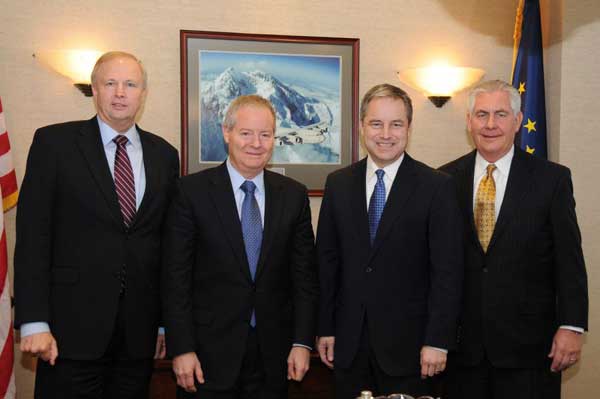 A report prepared by the Department of Fisheries and Oceans for this week’s meeting of the International Pacific Halibut Commission in Anchorage says the controversial program where recreational fishers could buy quota from commercial fishers had only “limited success…with few pounds caught.”
A report prepared by the Department of Fisheries and Oceans for this week’s meeting of the International Pacific Halibut Commission in Anchorage says the controversial program where recreational fishers could buy quota from commercial fishers had only “limited success…with few pounds caught.”
The report also says that Fisheries Minister Keith Ashfield will be making a “decision on any changes to the current allocation plan in advance of the 2012 fishing season.”
The IPHC report says:
For the 2011 season only, DFO implemented an experimental leasing program, where interested recreational fishers could receive experimental licenses that would allow them to lease halibut quota from commercial quota holders and allow continued sport fishing after the general sport fish closure. The program allowed for a market-based transfer system and provided the recreational sector access to fish outside their management allocation. The program had limited success with 4,000 pounds transferred with few pounds caught.
Later in the report, the IPHC says that DFO did not release to the commission the exact figures for halibut caught under the pilot project.
According to the report, once again the recreational catch exceeded its assigned quota. DFO provided a preliminary 2011 sport catch estimate of 1.220 million pounds, which exceeded the sport fishery allocation by 272,000 pounds (29%). Canada overall also exceeded its halibut quota. The report says “The total Area 2B catch of 7.87 million pounds was 3% over the combined total catch limit (7.65 million pounds).” The commercial fishery came in slightly under quota, “less than one per cent,” according to the report. Any difference can be allocated to the First Nations Food, Social and Ceremonial Fishery.
The IPHC says that DFO anticipated the controversial early closure of the recreational fishery. The report says: “The season was the shortest on record, opening on March 1 and closing on September 5. In August, DFO projected that the sport allocation would be reached before the usual December 31 season closing date, so an early closure was not unexpected.”
Although there are no figures to prove it, it is likely the decision by the recreational fishers to boycott the program was one reason for the “few pounds” caught as part of the pilot project.
The pilot project announced a year ago, and only for 2011, was intended by DFO as pilot project to get additional quota for recreational halibut fishers and guides from the commercial fishery. The announcement, however, brought anger and demonstrations across British Columbia by the recreational fishery. The halibut allocation dispute was a key issue in most BC coastal ridings during the May election, but wasn’t decisive enough to defeat Conservative candidates such as John Duncan in Vancouver Island North, who kept his seat in a very close vote.
The IPHC opens its annual meeting on Tuesday, January 24, 2012, and concludes on Friday, January 27. The IPHC meeting will also consider recommendations for drastic cuts in halibut quotas all along the western coast of North America for the 2012 season, due to uncertainty about the long term health of the biomass.
The IPHC recommends a total west coast quota of 33.135 million pounds for 2012, a decrease of approximately 19% from 2011. The recommended season will run from March 15 to November 15. It says “This recommendation is a compromise between minimizing interceptions of migrating fish and providing opportunity for market presence of fish wild halibut.”
The proposed quota for British Columbia area 2B is 6,633,000 pounds, down 13.3%. The IPHC staff paper recommends that current Canadian policy of 88 per cent for commercial and 12 per cent for recreational halibut be continued. Recreational fishers and guides have objected to that quota for the past several years.
One of the major problems facing the halibut fishery along the west coast, according to the report, is the large number of undersized females in the total biomass. Any large catch of immature females would have drastic long term consequences on the halibut stock and therefore the halibut fishery.
A staff paper to be considered at the meeting calls for reconsideration of the minimum allowable size, balancing a suggestion to catch more immature males while maintaining the female stock until it can mature and produce a new generation.
Any announcement of a new Canadian policy by Fisheries Minister Keith Ashfield will be based on a 2011 long review of the Pacific halibut allocation that looked at the long-term options for allocation with objectives of conservation, economic prosperity, and flexibility. The review process included meetings with policy makers, stakeholders, and sector representatives.
You can retrieve the complete IPHC Annual Meeting Blue Book here.

